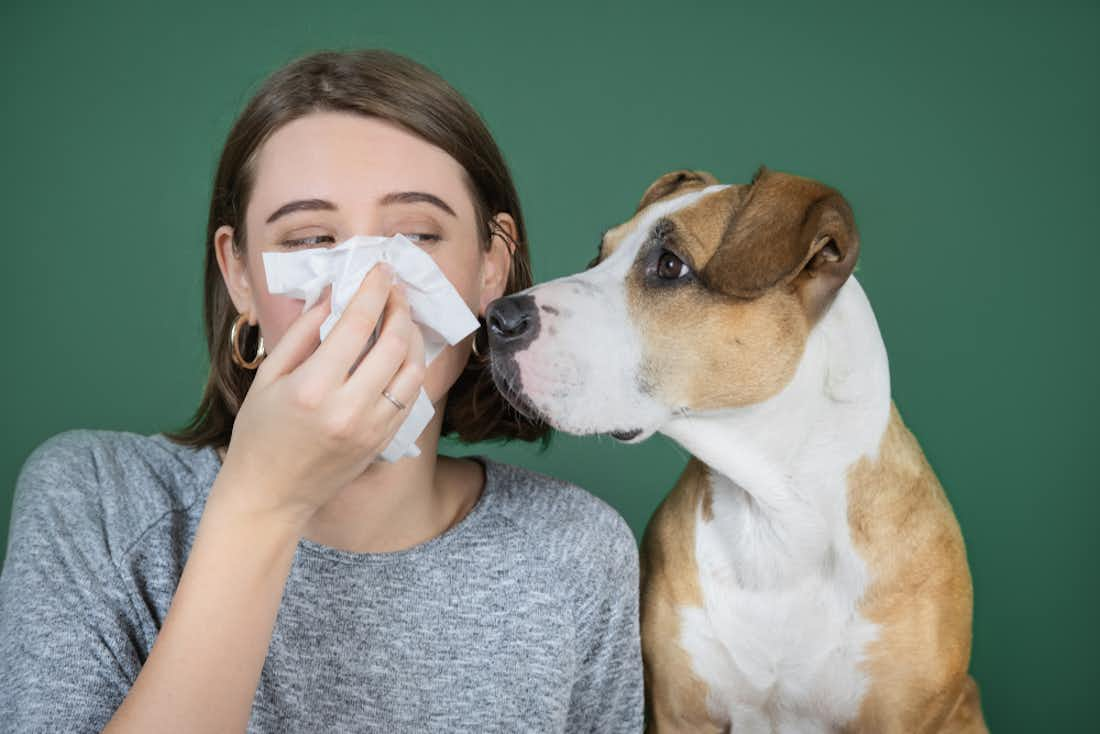Nov 14, 2023
Dust Mite Allergy: Causes, Symptoms, & Treatment
4 minute read
Living with a dust mite allergy can be a daily challenge. The tiny creatures known as dust mites trigger allergic reactions that can cause significant discomfort. In understanding this condition, you can take proactive steps towards managing your symptoms and improving your overall quality of life.
Understanding Dust Mite Allergy
Dust mites are microscopic organisms that thrive in warm and humid environments, commonly found in our homes.
While these creatures are harmless to most people, those with dust mite allergies experience hypersensitivity to proteins present in the dust mites droppings. When exposed to dust mite allergens, the immune system overreacts, triggering a range of symptoms.
Causes of Dust Mite Allergies
Dust mite allergies are primarily caused by the body's immune system reacting to the proteins present in dust mite allergens. These allergens – found in the feces and body parts of dust mites – are extremely tiny and can become airborne when disturbed. This makes them easy to inhale or come into contact with.
The primary trigger for dust mite allergies is exposure to these allergens. Dust mites thrive in warm and humid environments – which are commonly found in our homes. They primarily reside in areas such as mattresses, pillows, bedding, upholstered furniture, carpets, and stuffed toys. These areas provide an ideal breeding ground for dust mites due to the warmth and humidity they offer.
Dust mites feed on dead skin cells shed by humans and animals, making household dust an abundant source of food for them. As these microscopic organisms digest their food, they produce waste in the form of small particles. It is the proteins present in these particles that trigger an allergic reaction in sensitive individuals.
It is important to note that while dust mites are present in most indoor environments, the severity of allergies can vary. Some individuals may have a higher sensitivity to dust mite allergens, leading to more pronounced symptoms. Others may experience milder reactions.
In addition to exposure to dust mite allergens, other factors can contribute to the development or worsening of dust mite allergies. These include:
- Genetic predisposition: Individuals with a family history of allergies or asthma may be more prone to developing dust mite allergies.
- Weakened immune system: Certain medical conditions or medications that suppress the immune system can make individuals more susceptible to allergies – including dust mite allergies.
- Existing allergies: People who already have other allergies – such as pollen or pet allergies – may be more likely to develop a dust mite allergy as well.
Common Symptoms of Dust Mite Allergies
Recognizing the symptoms of a dust mite allergy is crucial for effective management. The following signs may indicate that you are experiencing an allergic reaction to dust mites:
- Nasal Symptoms: Sneezing, runny or stuffy nose, itching, and frequent or persistent coughing
- Respiratory Symptoms: Wheezing, shortness of breath, chest tightness, and asthma exacerbations
- Skin Symptoms: Skin itching, rashes, eczema flare-ups, and hives
- Eye Symptoms: Itchy, red, or watery eyes
- Sinus Symptoms: Facial pain or pressure, headaches, and postnasal drip
It is important to note that the severity of symptoms can vary from person to person. If you experience any of these symptoms, especially in association with specific triggers such as exposure to dust or while spending time in certain areas of your home, it is advisable to consult with a healthcare professional for proper diagnosis and guidance.
Preventing Dust Mite Allergies
While complete elimination of dust mites is often impossible, following simple preventive measures can significantly reduce your exposure:
- Encase mattresses and pillows: Use dust mite-proof covers for mattresses, pillows, and bedding to create a barrier between you and the allergens.
- Wash bedding regularly: Wash sheets, pillowcases, and blankets in hot water (above 130°F) to kill dust mites and remove allergens.
- Vacuum regularly: Use a vacuum cleaner with a HEPA filter to effectively trap dust mites and allergens. Vacuum carpets, upholstered furniture, and curtains frequently.
- Reduce humidity: Use a dehumidifier to keep humidity levels below 50% as dust mites thrive in humid environments.
- Remove clutter: Minimize the number of stuffed toys, knick-knacks, and other items that collect dust.
- Clean with care: Use damp cloths or microfiber dusting tools when dusting to avoid stirring up allergens into the air.
Treatment Options for Dust Mite Allergies
Managing dust mite allergies involves a multi-dimensional approach aimed at minimizing symptoms and improving overall quality of life. Here are some commonly used treatment options.
Medications
Over-the-counter antihistamines, nasal corticosteroids, and decongestants can provide temporary relief from symptoms. For more severe cases , prescription medications or allergy shots or sublingual immunotherapy tablets may be recommended by a healthcare professional.
Allergen Immunotherapy
Also known as allergy shots or sublingual immunotherapy tablets, allergen immunotherapy involves gradually exposing the body to increasing doses of dust mite allergens to help build up tolerance and reduce symptoms over time.
Environmental Control Measures
Implementing the preventive measures mentioned earlier can significantly reduce dust mite exposure and alleviate symptoms.
Air Purification
Using high-efficiency air purifiers with HEPA filters can help remove allergens from the air, creating a cleaner and healthier environment.
Professional Cleaning
In situations where dust mite allergens are deeply embedded, professional cleaning services that specialize in allergen removal can provide a thorough and effective solution.
How Cleared Can Help
Living with a dust mite allergy requires proactive management to minimize symptoms and improve overall well-being. By understanding the causes, recognizing symptoms, and implementing preventive measures, you can significantly reduce your exposure to dust mite allergens.
Additionally, seeking guidance from a healthcare professional will help you receive appropriate treatment options tailored to your specific needs.
Cleared by LifeMD is your one stop shop for allergy relief. A licensed medical professional can help you get tested for allergies and guide you in creating a plan to treat your dust mite allergy, so those pesky little mites won’t bother you again. Make a virtual appointment today to get started.
Authors

Dr. Payel Gupta
Medically reviewed by Dr. Payel Gupta



